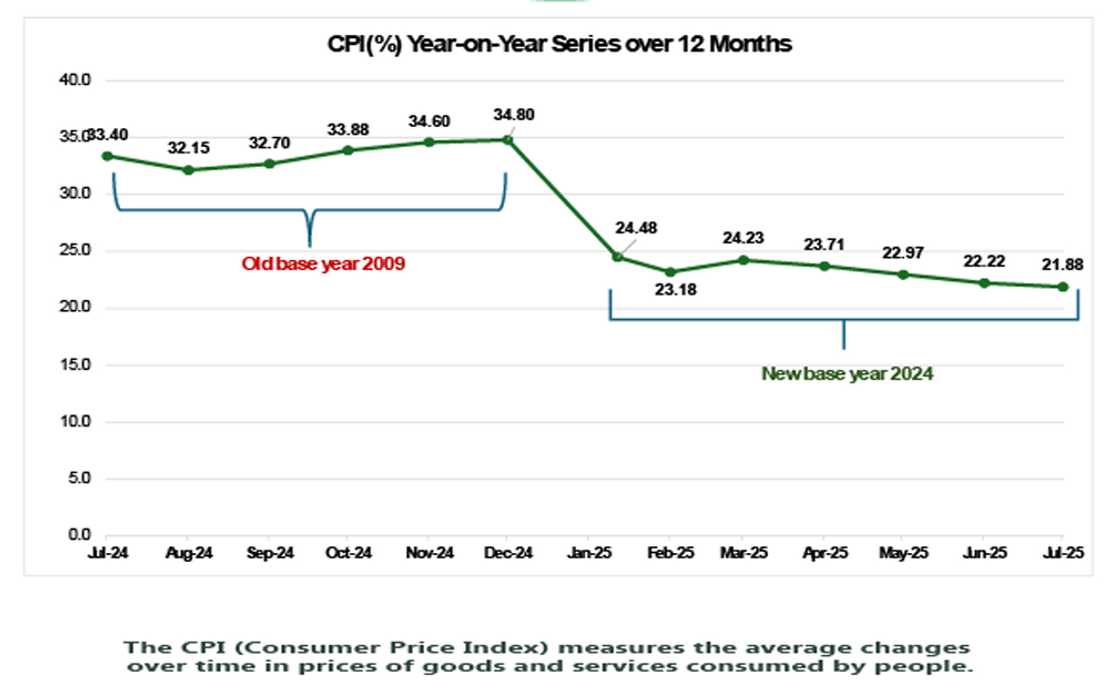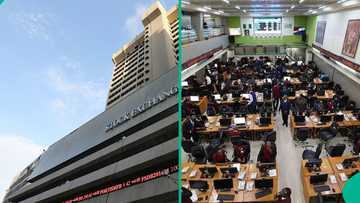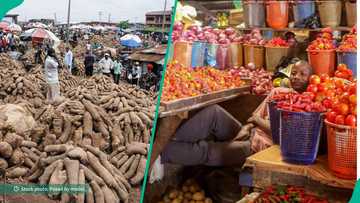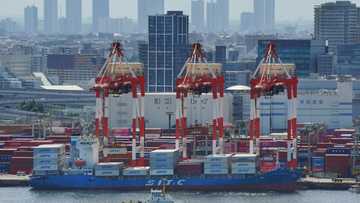Borno, Niger Lead States With Highest Inflation Rates
- New data shows inflation figures are on the decline, signalling better times ahead for Nigerian households.
- The NBS revealed that both all-items inflation and food inflation have recorded improvements from the previous year
- Economist Muda Yusuf notes notable progress but warns that lingering risks still require policy attention
Don't miss out! Join Legit.ng's Sports News channel on WhatsApp now!
Legit.ng journalist Dave Ibemere has over a decade of experience in business journalism, with in-depth knowledge of the Nigerian economy, stocks, and general market trends.
The National Bureau of Statitics has revealed that Nigeria’s Consumer Price Index (CPI) in July, the headline inflation rate eased to 21.88%, down from 22.22% in June 2025.
This represents a 0.34 percentage point decrease compared to the previous month.

Source: Getty Images
On a year-on-year basis the headline inflation rate was 11.52 percentage points lower than the 33.40% recorded in July 2024, largely due to the effect of a different base year (November 2009 = 100).
While on a month-on-month basis, the headline inflation rate in July 2025 stood at 1.99%, which was 0.31 percentage points higher than the 1.68% recorded in June.
This indicates that the average price level increased at a faster pace in July compared to June.
Food inflation rate
The food inflation rate in July 2025 stood at 22.74% year-on-year, representing a sharp decline of 16.79 percentage points from 39.53% in July 2024, again reflecting the impact of the new base year.
On a month-on-month basis, food inflation was 3.12%, slightly lower than the 3.25% recorded in June.
The decline was driven by slower increases in the prices of vegetable oil, beans (white), local rice, maize flour, guinea corn (sorghum), wheat flour, and millet.
The average annual food inflation rate for the twelve months ending July 2025 was 26.97%, a decrease of 9.39 percentage points from the 36.36% recorded in July 2024.

Read also
Nigeria's inflation rate drops to 21.88% in July, as rice, beans, other food items prices change
State inflation breakdown
For food inflation, Borno (55.56%), Osun (29.10%), and Ebonyi (29.06%) recorded the highest year-on-year increases. Meanwhile, Katsina (6.61%), Adamawa (9.90%), and Zamfara (14.72%) posted the slowest rises.
On a month-on-month basis, food inflation was highest in Borno (10.89%), Kano (10.86%), and Sokoto (7.43%).
While Zamfara (-6.00%), Bauchi (-2.18%), and Abia (-1.06%) recorded the lowest decline.
Food Inflation by State
- Abia: 19.9%
- Abuja: 22.1%
- Adamawa: 9.9%
- Akwa Ibom: 20.9%
- Anambra: 22.0%
- Bauchi: 15.5%
- Bayelsa: 26.9%
- Benue: 23.5%
- Borno: 55.6%
- Cross River: 25.5%
- Delta: 23.8%
- Ebonyi: 29.1%
- Edo: 26.5%
- Ekiti: 28.3%
- Enugu: 23.1%
- Gombe: 20.3%
- Imo: 25.6%
- Jigawa: 18.9%
- Kaduna: 22.0%
- Kano: 27.4%
- Katsina: 6.6%
- Kebbi: 23.6%
- Kogi: 25.0%
- Kwara: 21.4%
- Lagos: 20.3%
- Nasarawa: 26.6%
- Niger: 24.1%
- Ogun: 26.5%
- Ondo: 17.9%
- Osun: 29.1%
- Oyo: 27.0%
- Plateau: 19.0%
- Rivers: 18.9%
- Sokoto: 17.9%
- Taraba: 25.5%
- Yobe: 15.1%
- Zamfara: 14.7%

Source: Facebook
All-Items inflation by state
- Abia: 21.7%
- Abuja: 24.2%
- Adamawa: 16.3%
- Akwa Ibom: 21.8%
- Anambra: 20.3%
- Bauchi: 18.9%
- Bayelsa: 20.3%
- Benue: 25.7%
- Borno: 34.5%
- Cross River: 21.8%
- Delta: 22.1%
- Ebonyi: 23.5%
- Edo: 21.2%
- Ekiti: 23.3%
- Enugu: 22.5%
- Gombe: 17.4%
- Imo: 23.1%
- Jigawa: 19.4%
- Kaduna: 23.6%
- Kano: 25.1%
- Katsina: 15.6%
- Kebbi: 22.6%
- Kogi: 21.8%
- Kwara: 23.5%
- Lagos: 21.4%
- Nasarawa: 24.0%
- Niger: 27.2%
- Ogun: 20.8%
- Ondo: 18.4%
- Osun: 24.1%
- Oyo: 24.6%
- Plateau: 23.3%
- Rivers: 20.0%
- Sokoto: 16.5%
- Taraba: 24.9%
- Yobe: 11.4%
- Zamfara: 12.8%
Expert speaks
Muda Yusuf, the director/CEO of the Centre for the Promotion of Private Enterprise (CPPE), explained in a message to Legit.ng that while there are notable improvements in some key indicators, lingering risks still demand policy attention.
He said:
"Despite these gains, pressures persist. Month-on-month headline inflation rose from 1.68% in June to 1.99% in July, while year-on-year food inflation inched up from 21.97% to 22.74%.
"These movements underscore the continuing vulnerability of the economy to supply-side shocks."
Prices for beans, garri, rice, yam, onions, other food items drop
Earlier, Legit.ng reported that the prices of key food commodities have dropped, driven largely by the harvest season and better supply flows into urban centres.
This is according to a commodity price update released by Financial Derivatives Company Limited.
According to the report, various staples such as garri, rice, beans, and palm oil are now on a downward price trend.
Source: Legit.ng





